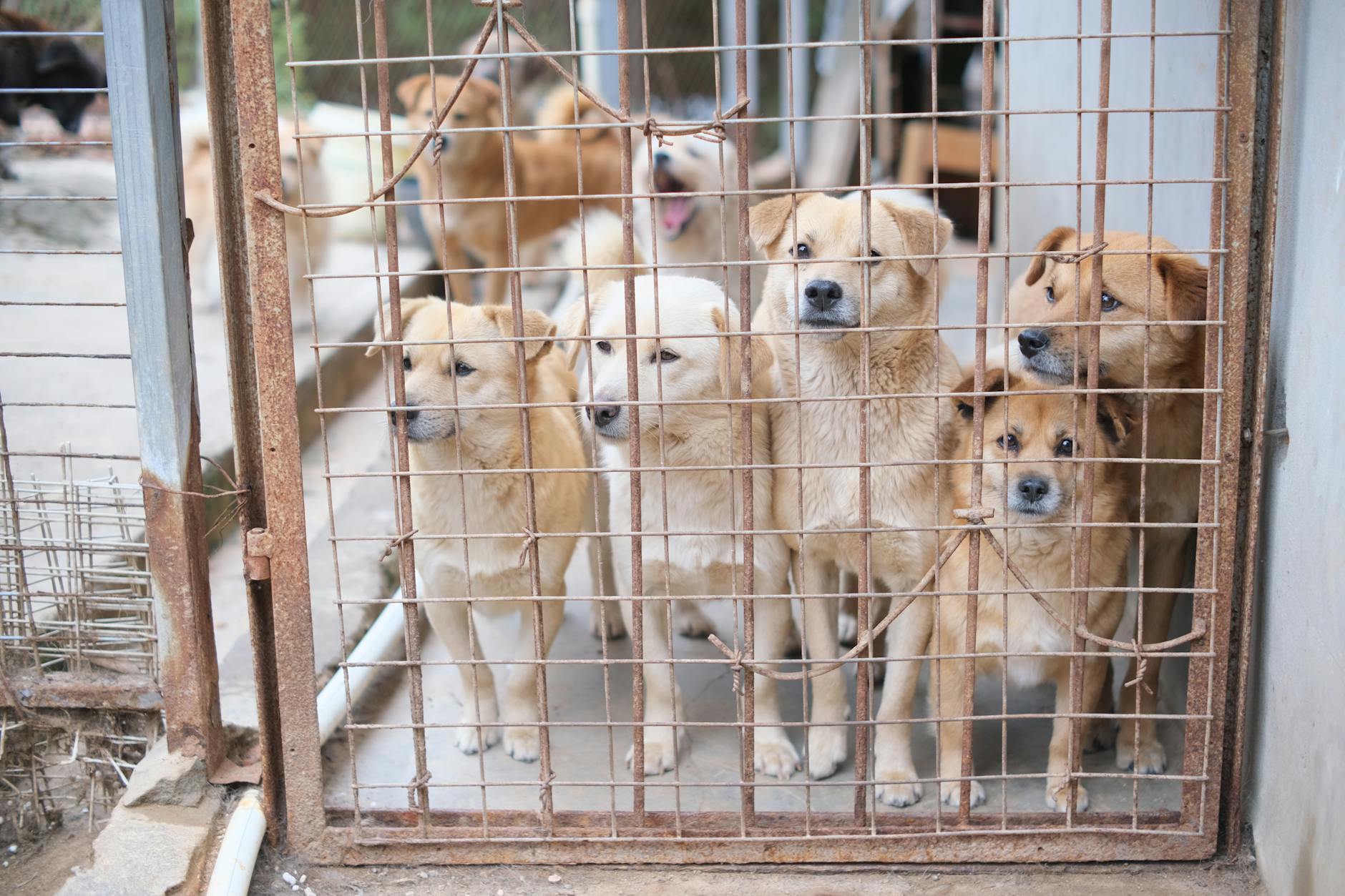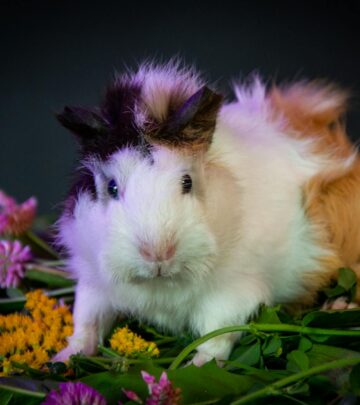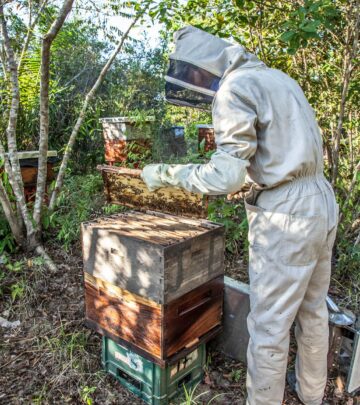Shelter Puppy Arrives Covered in Mysterious Purple—The Heartbreaking Truth and Her Beautiful Rescue
Timely compassion and expert care can transform vulnerable animals into trusting pets.

Shelter Staff Shocked by a Purple Puppy’s Arrival
It’s not every day that shelter workers see a puppy arrive coated in a brilliant purple substance. That’s precisely what happened at a busy animal intake center, when a small pup, trembling and sticky, landed in their care.
At first, the shelter team couldn’t understand why such an intense dye would cover a defenseless dog. Their concern quickly grew as they realized this was no accident, but the first sign of a dark, disturbing practice hidden in plain sight.
Initial Reactions and Efforts to Help
The staff rushed the puppy into the exam area, worried about potential toxicity or skin damage. The animal’s fur was matted with sticky, purple stains; some of it had soaked through to the skin. Despite this, the little dog managed gentle tail wags, responding to their voices with hopeful eyes.
- Immediate Steps Taken:
- Vets checked vital signs and overall health
- Staff worked to wash away the dye, fearing it could be caustic or masking wounds
- Photos were taken for evidence and social media to seek information about her prior home
The Disturbing Reason for the Purple Stains
While the shelter staff worked, concern spread. What could cause this vibrant hue? After investigating common substances, the grim answer surfaced: purple dyes and stains are sometimes used to mark animals as “bait” in illegal dogfighting rings.
Bait animals—often puppies, kittens, or rabbits—are intentionally marked so participants know which animals are meant to be attacked or trained upon.
- What is Bait? In dog fighting circles, “bait” animals are often smaller, gentle, or otherwise helpless animals marked—sometimes with chemicals, dyes, paints, or markers—and forced into situations where powerful dogs attack them during “training” sessions.
- The Role of Color: Specific colors have at times indicated particular uses or ranks among bait animals. Purple is one such hue notorious for this purpose.
Puppy’s Physical and Emotional State
Beyond the coloring, the puppy had clear signs of neglect:
- Patchy fur and minor wounds suggested prior mistreatment
- Thin and dehydrated, she was likely left without food for periods
- Despite the trauma, her temperament was remarkably gentle and hopeful
Vets documented no severe bite wounds, a small comfort that she had likely been rescued before enduring the worst. Still, she had an emotional journey ahead, requiring patience, medical care, and love.
The Medical Response—A Race Against Time
The shelter’s veterinary team quickly developed a treatment plan:
- Detoxifying Baths: Multiple medicated baths to remove as much dye as possible and soothe irritated skin
- Antibiotics and Fluids: To support her recovery and fight off infection risk
- Nutritional Care: Careful reintroduction of food and water
- Pain Management: For any bruises or tenderness, ensuring comfort and healing
The staff monitored her for allergic or toxic reactions and provided warmth and security throughout.
Going Public—A Call to Action
News of the purple puppy quickly spread. The shelter posted her story and photos online, asking for tips that could lead to her abuser and to highlight the larger issue of animal fighting in the community.
- The post went viral, with animal lovers expressing horror and support for the puppy’s recovery
- Local media picked up the story, bringing awareness to the dangers faced by innocent animals in illegal activities
- Law enforcement collaborated with animal protection groups to investigate leads
Public education about the signs of abuse became a core mission for the shelter. They implored anyone who sees animals marked with unusual colors or injuries to report immediately.
The Healing Journey—Step by Step Progress
Over the following weeks, the puppy—dubbed “Violet” by staff—made extraordinary progress:
- Her playful spirit emerged as the dye slowly faded from her fur
- Medical rechecks showed healthy skin re-growth and a steady appetite
- Behavioral work helped her trust people and reduce her fearful reactions
- Violet started engaging in gentle play, rolling over for belly rubs and giving affectionate licks to her caregivers
Painted fur still lingered in places, a stubborn reminder of her ordeal. Yet the happiness and resilience she displayed gave hope that the trauma would not define her future.
Rescue, Rehabilitation, and Transformation
After passing her medical checks, the next step was finding Violet a nurturing, permanent home. Her story had already inspired countless rescue offers, each one touched by her bravery and transformation.
- Matching with a Family: The shelter carefully screened families for the patience and empathy needed, eventually selecting a loving household ready to continue her healing
- The First Days at Home: Adoption updates showed Violet playing with new toys, snuggling with her owners, and exploring her backyard—free at last from fear
- Follow-Up: Regular calls and visits from the shelter staff ensured her ongoing well-being
Her new family celebrated every milestone, from her first unguarded nap to the moment the last of the dye faded from her coat, symbolizing her transition from victim to cherished companion.
Dogfighting and Animal Abuse—A Hidden Epidemic
Violet’s story illustrates a much larger, ongoing problem. Dogfighting rings operate clandestinely across the globe, exploiting countless animals every year.
- Laws and Enforcement: Most regions have strict bans on organized animal fighting, but limited resources and secrecy make detection difficult
- Signs of Trouble: Animals with unexplained scars, dye markings, untreated wounds or fearful behavior; properties with heavy chains, fighting equipment, or excessive barking
- Public Responsibility: Community vigilance and reporting are the best tools to save animals like Violet
Shelter staff urge all animal lovers to learn the warning signs and advocate for tougher enforcement against abusers.
How You Can Help—Taking Action Locally
Animal rescue organizations emphasize the power of collective action in fighting cruelty. Here’s how individuals and communities can make a difference:
- Report any suspected abuse or battered animals to local authorities or animal protection agencies
- Share educational resources about the realities of dogfighting and bait animals
- Support shelters by volunteering, fostering, or donating supplies or funds
- Lobby for stricter penalties for those involved in animal fighting or abuse
- Consider adopting rescue animals, many of whom have survived severe trauma
The Power of Compassion—A Message from Violet’s Rescuers
Shelter staff reflected on Violet’s case as a powerful reminder of why their work matters. Every animal, no matter their past, deserves compassion and a fighting chance at happiness.
“We were heartbroken the day Violet arrived,” one vet shared, “but every step she took toward trust reminded us that love can heal even the deepest wounds. Her story proves that with community support, we can save lives—and stop cruelty in its tracks.”
Frequently Asked Questions (FAQs)
Q: Why are animals marked with purple dye?
A: In some cases, purple or other colored dyes are used to designate animals as ‘bait’ for dogfighting. The coloring helps identify which animals are meant for training purposes in illegal activities.
Q: Is purple dye dangerous for animals?
A: While not all dyes are toxic, many have chemicals that can irritate skin and are unsafe if ingested. In rescue cases, animals are bathed and treated to remove substances as quickly as possible.
Q: What should I do if I see an animal covered in dye?
A: Notify animal control or your local SPCA immediately. Marked animals may be at risk and need urgent veterinary assessment and safety.
Q: How can I support organizations fighting animal abuse?
A: Support local rescues through adoption, donations, or volunteering. Spread awareness about animal fighting and lobby for stronger laws against cruelty.
Recognizing Signs of Abuse and Dogfighting
Knowing what to look for can save lives. Here are critical red flags:
- Frequent sightings of animals with unusual colored markings or shaved patches
- Animals with scars, puncture wounds, limping, or untreated injuries
- Properties with heavy outdoor chains, makeshift kennels, or groups of aggressive dogs kept in isolation
- Individuals attempting to hide their animals or discourage visitors
- Suspicious gatherings, late-night activity, or loud animal sounds at odd hours
Further Resources and Emergency Contacts
- Contact your local animal shelter or SPCA for help with rescued animals
- National tip lines: ASPCA Animal Cruelty (USA) or RSPCA (UK)
- Educate yourself with reading material from established rescue organizations and humane societies
Violet’s Legacy—Hope From Heartbreak
Today, Violet lives as a symbol of survival and advocacy. Her journey reminds us that vigilance, compassion, and community support truly can transform lives, even after the darkest beginnings.
Every dye-covered, injured, or frightened animal is a call—not just for rescue, but for lasting change.
References
- https://theanimalrescuesite.com/blogs/news/purple-paws-bait
- https://petrescuereport.com/2025/from-heartbreaking-case-of-neglected-pup-covered-in-purple-substance-to-beautiful-transformation-settles-in-with-her-new-family/
- https://www.youtube.com/watch?v=cExpdxghJpE
- https://www.livescience.com/animals/extinct-species/our-animals-are-gray-wolves-colossal-didnt-de-extinct-dire-wolves-chief-scientist-clarifies
- https://www.youtube.com/watch?v=2OBm_4aoXNI
Read full bio of Srija Burman















Community Experiences
Join the conversation and become a part of our empowering community! Share your stories, experiences, and insights to connect with other beauty, lifestyle, and health enthusiasts.